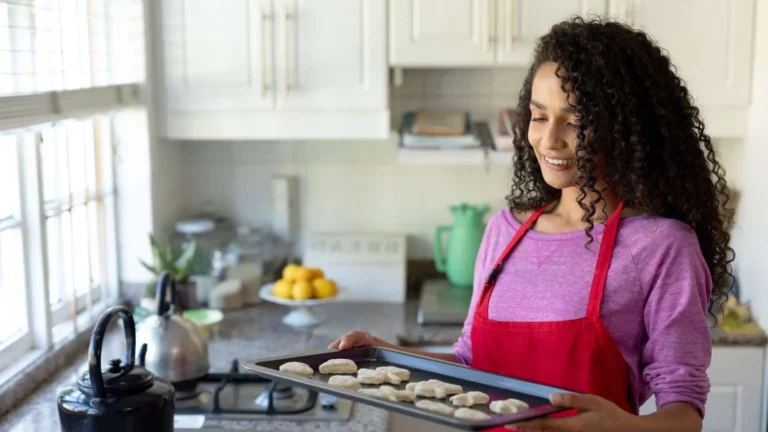Table of Contents
Do you love baking cakes, cookies, and pastries? If yes, you can use this passion and earn some extra dough. Starting a baking business will help you to share your skills and do what you love. You can sell around your neighborhood or local markets, online, or through social networks. The possibilities are endless. Let’s examine how to start a baking side hustle.
There is an increasing demand for homemade baked products. Now is a great time to start this business. Yet, it needs careful planning. First, decide what to bake. Then, learn the local rules. Finally, create a marketing plan to attract customers.
Finding Your Niche: What to Bake and Sell
The first step in starting a baking side hustle is deciding what to bake and sell. Since the baking market is huge, focusing on a singular niche is key. This could be anything from gluten-free cookies to gourmet cupcakes or even custom-themed cakes. By focusing your target in a niche, you are more competent and focused on a certain market.
Research food trends to find a potential niche, especially when there’s a growing interest in healthier eating habits. After picking a niche, perfect your recipes. Aim for something unique that keeps customers coming back. Find the best mix for your audience. Also, a small, focused menu makes it easier to manage orders.
Essential Baking Skills and Equipment
You need the right skills and equipment to run a baking side business. Passion is key, but professional skills ensure consistent, quality results. If someone feels insufficiently skilled, they can also take online classes or attend local courses.
People will require key instruments like an oven, cookers, measuring cups, a baking pan, and other kitchen tools. For specific products, extra tools might be necessary. For instance, cake decorators need kits, and pastry makers need molds. Always choose high-quality equipment for efficiency and lasting use.
Understanding Cottage Food Laws and Regulations
If you plan to market baked products directly from your kitchen, it is advisable to observe food laws. These laws differ by state and specify what you can sell. Typically, you can sell bread, cookies, and cakes. However, items containing dairy or meat might need special permits or could be banned.
Check with your local health department or small business administration to stay legal. You may need a food handler’s permit, a kitchen inspection, and proper product labeling. Following these rules keeps your business legal and shows customers you care about safety and quality.
Creating a Business Plan for Your Baking Side Hustle
Like any other entrepreneurial endeavor, even your baking niche requires a business plan. It specifies your objective, audience, pricing, and advertising strategies. First, identify your ideal customers. Are they busy professionals, health-conscious parents, or couples planning weddings? Knowing your audience helps in product development and marketing.
Next, consider your budget. A good plan includes a marketing strategy. Will you sell online, at farmers’ markets, or through local cafés? A clear plan keeps you organized and focused as you grow.
Marketing Your Baked Goods: Strategies and Tips
Marketing is important for a beginner’s business. Build a brand to attract and keep customers. First, establish an online presence. Most customers search online today. Have a website or a social media page for your business to share products with potential customers. Upload good images and interact with the customers to create a favorable impression.
Next, offer samples at local events, farmers’ markets, or to friends and family. This spreads the word. Collaborate with local cafes or event planners to reach more people. Happy customers can refer others, which is powerful marketing.
Setting Prices: How to Price Your Baked Goods
Pricing baked goods can be tricky. Yet, it’s vital to cover costs and stay competitive. Start by adding ingredients, packaging, and overhead costs like utilities and delivery. Also, include your time and labor.
Next, check out local competitors to see their prices. Avoid undervaluing your work. Customers often pay more for quality, artisanal goods. Consider tiered pricing: charge more for products with unique ingredients or designs. Finally, regularly review and adjust your prices to ensure profits as your business grows.
Managing Orders and Deliveries Efficiently
As your baking side business grows, managing orders and deliveries becomes crucial. First, communicate with customers using social media, email, or online orders. Always confirm order details to prevent misunderstandings.
Next, make a delivery schedule to stay organized. This is key if you’re juggling other tasks. For deliveries, package your goods to keep them fresh and appealing. For big orders or events, consider partnering with a delivery service. Finally, good time management and organization are key. They keep customers happy and your business running smoothly.
Balancing Baking with Other Commitments
Running a baking side business can clash with a full-time job, family, or hobbies. So, set clear limits and a personal schedule. Reserve specific times for baking and orders.
Use calendars or apps to stay organized and prevent burnout. It’s fine to decline orders when busy. This balance is key for enjoying baking and ensuring it lasts.
Read Related Article:
Conclusion
Starting a baking side hustle can be rewarding and profitable. First, find your niche, then market your products, and manage orders. Each step is vital for success. You can grow your side hustle with proper planning, legal knowledge, and a passion for baking.
Tools like Beem’s Everdraft can help with cash flow. Beem will help you plan your budget, send and receive money, calculate taxes, take out personal loans, and many more tasks. This makes it easier to handle the ups and downs of day trading. Download the app here!
FAQs for How to Start a Baking Side Hustle
How do I start selling baked goods from home?
First, check local laws to ensure compliance when selling baked goods from home. Next, choose a niche, buy the necessary equipment, and create a marketing plan. After setting up, promote your goods online and offline to attract customers.
Do I need a license to sell baked goods from home?
Many states have laws that allow this with little regulation. However, you might still need a business license or permit. So, it’s crucial to check local rules first.
What are the most profitable baked goods to sell?
Several best-selling bakes are available. These include customized cakes and occasion cupcakes, artisan breads, and healthy versions of baked treats, such as vegan or gluten-free ones.















































